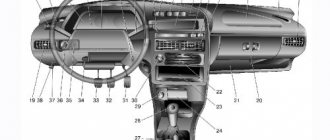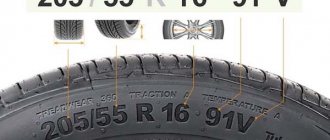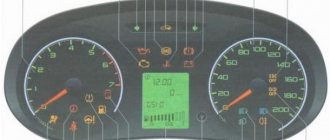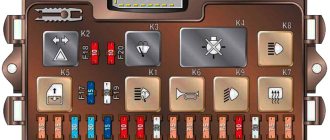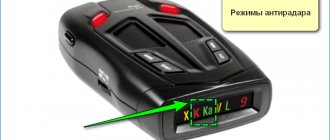Operating principle of radar detectors
In this article, the word “radar detector” is used as a synonym for radar detector. These radar detectors serve to create interference that impedes the operation of the radar, and their use is prohibited by Russian law.
The main function of these compact electronic devices is to detect radars and devices emitting radio waves or laser beams, and promptly warn the driver about them.
The main function of any radar is to process signals reflected from a moving vehicle. The range at which the radar is able to determine the speed of a moving car is 300-500 meters.
The most important advantage of an antiradar over a radar is the use of direct rather than reflected radiation for its detection. The range of the radar detector is 1-3 km in the city, up to 5 km outside the city, depending on the terrain, weather and the sensitivity of the device itself.
Modern radar detectors are devices with high-performance processors, capable of operating at all existing frequencies, equipped with a GPS satellite navigation system for recording stationary traffic police posts, photo and video cameras, places of false alarms and other additional functions on the map.
A common problem when using radar detectors is false alarms of the device. They occur due to the operation of some electronic systems used in mechanisms and cars in ranges that coincide with the ranges of the radar detector.
The ability to minimize false positives is achieved by 3 methods:
- hardware - using special filters on the receiving device;
- software - by developing algorithms that are able to sort radar signals from any interference;
- manually - by independently reducing the sensitivity of the receiving device thanks to the “city / highway” mode.
Decoding signals in radar detectors
In current conditions, to establish the speed of a car, 2 types of radars are used:
- radio frequency, operating on high-frequency radio signals in selected ranges;
- laser (optical, lidars), the operating principle of which is to process reflected laser pulses.
The task of the latest radar detectors is to identify all radar signals operating on any used ranges.
X-band
DPS devices use several standardized radio frequencies. The most common and basic is 10525 MHz, called the X-band.
K, or Kay-band
The latest range used in the operation of devices with a carrier frequency of 24150 MHz. Due to the increased number of capabilities and reduced operating time, K-band devices have an increased range and speed of detection and fixation. In addition, the devices have become more compact. The larger 100 MHz bandwidth reduced interference. This frequency is used by the Strelka, Berkut, Iskra radars and their converted models. Today, the K-band is one of the most popular and used in the world.
Ka-band
This range with a carrier frequency of 34700 MHz at this stage has the broadest prospects. The shortest duration of the period and high energy capabilities make it possible to process and record vehicle data at a distance of up to 1.5 km. The bandwidth is 1400 MHz, which guarantees the absence of all kinds of interference and incredible accuracy in reading the vehicle speed. Experts call this range SuperWide, or ultra-wide.
Despite the pronounced advantages, Ka-band equipment is only gaining popularity in Russia and the Commonwealth countries.
Ku-band (European)
A rather infrequent range with a carrier frequency of 13450 MHz. Used only in a few CIS countries, very popular in the Baltic states. It makes no sense to purchase it for use in Russia. The difficulty is that in the territory of the Russian Federation and some European countries, satellite TV is transmitted at this frequency, and therefore, due to the huge amount of interference, the correct operation of the device is impossible.
L-band (Laser)
The operation of devices using it is based on the reflection of a narrowly directed laser beam. Several short laser pulses are sent at equal intervals in the direction of a moving object. The received reflected information is processed and the distance to the vehicle of each signal is measured. Based on the results of summary processing using simple algorithms, the speed of movement of the object is calculated. In modern laser radars, the operating principle remains the same, only the length of the beams and the time interval between them change.
The main disadvantage of laser devices is that they can only be used in clear weather. In the presence of snow, rain or fog, interference is created that precludes the operation of such radars.
Most brands of modern radar detectors have a device for capturing laser pulses, the wavelength of which is from 800 nm to 1100 nm.
Other modes
VG-2, Specter . In most European countries and many American states, the distribution and operation of radar detectors is not permitted by law.
To detect the use of illegal devices, ultra-sensitive direction finders operating at a frequency of 13000 MHz have been developed.
Absolutely any radar detector in working condition operates with certain reference or difference frequencies. To identify such frequencies, a continuous stable signal is required, which is produced by the local oscillator.
The radar direction finder (Radar Detector Detector-RDD) is equipped with an ultra-sensitive device capable of detecting either the reference frequency or the natural oscillator frequency of a working radar detector.
RDD types VG v.1-4, Specter v.1-4 and their analogues pick up signals from radar detectors and determine their possible location.
In the Russian Federation and CIS countries, this frequency range is used by all transceiver devices for special communications.
If the radar detector has support for VG-2 and Specter, then it is equipped with protection against RDD pulses using the listed modes.
Instant-On - X-band pulse mode.
POP is an incredibly fast range, the type used in the latest generation of radars. Operates in K and Ka bands. When determining the speed, only one short pulse is triggered. Only the latest radar detectors can detect radars with this operating mode.
In Russia, support for this mode is indispensable for recording data from pulse radars such as Iskra, Berkut, etc. F-POP is also a certified American standard for the highest pulse mode of operation of police radars in the X, K and Ka bands. Identification of this signal is impossible with older models of radar detectors.
Instant-On (instant switching on) is a setting for the operation of the radar, in which in a certain mode the radio signal is not emitted, it is not recognized by capturing devices. Only the latest generation devices are able to detect this mode.
Ultra-K is radio emission in the K range, applied in the form of fast pulses. Used in the creation of the Berkut and Iskra-1 radars.
Ultra-Ka is radio emission in the Ka range, applied in the form of pulses.
Ultra-Ku is radio emission in the Ku band, applied in the form of pulses.
Ultra-X is a mode for recording radio emission emanating from a radar in the X band.
At the moment, devices operating at X-band frequencies in continuous and pulsed Ultra-X modes have long been outdated and have been replaced by devices using other frequencies.
The signature analysis mode reduces the number of false positives. Using data (signatures) stored in the processor, the received signals are processed and erroneous ones are eliminated.
“Arrow” is a signal that warns in advance about the operation of this radar. “Arrow” is difficult to determine due to the use of short-pulse signals in the K-band, so special attention should be paid to the presence of this function in the device.
The “Highway / City / Auto” mode adjusts the sensitivity of the signal receiver by using a group of additional filters to eliminate erroneous signals. Each mode can have several levels. For example: City 1, City 2, City 3.
S1, S2, S3 are also manual modes for adjusting the receiver sensitivity.
Selective band shutdown mode . In the Russian Federation you can disable the following bands: Ka, Ku, VG-2, Specter 1-4, POP. In Russia they are practically not used, and deactivating them will increase processor performance and reduce false positives.
Proper operation of a radar detector can save you from many troubles along the way. It should be taken into account that in some countries the use of radar detectors is strictly prohibited at the legislative level.
Which ones can be disabled and which ones can be enabled?
In case of false alarms by the detector when the modes are disabled, the following interference may be the cause:
- problems that are associated with the geographical features of the area;
- interference caused by the type of radar system used by the DVD;
- disruptions due to weather conditions;
- errors arising due to high traffic density.
In Russia, you can disable the Ka, Ku, VG-2, Specter and POP bands, because radars do not use these modes. When these modes are enabled, the level of protection against interference of the radar detector decreases, which is reflected in an increase in the number of false alarms.
- What kind of gasoline is better to fill?
- How to set up a radar detector to detect cameras
- ACC on the radio what is it?
- The best summer tires for crossovers
Rating of the best radar detectors: top 5
| Model | Best Features | Ranges | Radar detection | GPS, stationary base radars | Price from (RUB): | |
| SHO-ME G-700STR | according to owner reviews | K, Ka, Ku, X, Ultra-K | "Strelka", "Robot" | Yes | 3 400 | Find out prices |
| TrendVision Drive-700 | with GPS navigator | K, Ka, X, Ultra-K, Ultra-X | "Strelka", "Robot" | Yes | 5 350 | Find out prices |
| SilverStone F1 Monaco | according to the magazine "Behind the wheel" | K, Ka, Ku, X, Ultra-K | "Strelka", "Robot" | Yes | 4 200 | Find out prices |
| Subini STR-508 | budget, inexpensive and reliable | K, Ka, X | "Strelka", "Robot" | Yes | 3 700 | Find out prices |
| Street Storm STR-9000EX GP One BT kit | laser detector | K, Ka, X, Ultra-K, Ultra-Ka, Ultra-X | "City", "Highway", "Auto" | Yes | 6 000 | Find out prices |
What does Instant-On, POP mean?
The following features of police detectors are distinguished:
- Instant-ON. Thanks to this, the equipment turns on instantly. In this case, the radar is in standby mode and does not signal. Immediately after pressing a special button, the device is triggered and instantly begins measuring the speed of each target approaching it.
- POP is a technology responsible for the structure of the signal emitted by police radar. When the speed of a moving vehicle is measured, the device emits a small pulse. As a result, it is more difficult for radar detectors to determine the location of the speed measuring device. Many models consider this impulse to be a nuisance, so they do not signal the driver regarding approaching danger.
In order for the radar detector to recognize such a pulse, it must be equipped with a special additional function. Devices with security technology are more expensive.
This is interesting: How to attach a second key fob to an alarm system
Ka band
This is a fairly new and very promising radio frequency range, which has a carrier frequency of 34.7 GHz. It began to be used in America in 1991. Now they are also used in Europe, but the CIS countries and Russia do not yet use it.
This range of the radar detector is characterized by an even greater energy potential and a shorter period. Thanks to this, the Ka-band has a detection range of 1.5 km, during which high accuracy and minimum wasted time are maintained.
This range is called “superwide”. All this is due to its large bandwidth - 1400 MHz.
Important! In Russia, some military and radio equipment can operate in Ka mode, which causes false signals.
Satellite communications [ edit | edit code]
One of the main applications of K-band is satellite communications. Due to the fact that there is no longer room left for these purposes in the traditional bands (S-, L-, C-, X- and Ku-), Ka- and K-bands are now being used more and more.
In satellite communications this range is called Ka-band 30/20 GHz
and the frequency bands reserved for these purposes lie between 18.3-18.8 and 19.7-20.2 GHz for the Satellite-Earth link, and between 27.5 and 31 GHz for the Earth-Satellite link. That is, the Satellite-Earth channel lies entirely in the K-band, and the Earth-Satellite channel lies entirely in the Ka-band [2] [3] [4].
Currently, among the systems using the Ka-band 30/20 GHz we can note the Canadian Anik F2, which has 45 active Ka-transponders and provides multimedia services and broadband Internet access in North America [5], as well as KA-SAT owned by Eutelsat and providing similar services throughout Europe [6]. Among Russian satellites, this range is used by the military satellites Raduga-1 and Raduga-1M. In addition, the planned Express AM4 satellite, launched into an off-design orbit in August 2011 and subsequently declared completely lost, was supposed to operate in this range.
Range X
The frequency that formed the basis of the first radars is called the X band. Its operating wave is 10525 MHz. The range bandwidth is 10.50-10.55 GHz. Based on this, radars for traffic police of the Barrier, Sokol, Sokol M (D, S) types were developed.
At the moment, X-frequency radars are becoming a thing of the past. The reason for this is the moral and technical aging of such gadgets. Many industrial and household appliances operate in the same range, which causes false alarms.
Notes
- [www.janes.com/articles/Janes-Space-Systems-and-Industry/Raduga-Gran-Globus-series-Russian-Federation.html Raduga (Gran/Globus) series (Russian Federation), Spacecraft - Defense]. Jane's. Retrieved February 23, 2011.
- [epizodsspace.testpilot.ru/bibl/vehi/08.html Milestones in history. 1946-2006, TELEMETRY SYSTEMS](inaccessible link - history
). Russian Research Institute of Space Instrumentation. Retrieved April 25, 2011. [web.archive.org/20070330161344/epizodsspace.testpilot.ru/bibl/vehi/08.html Archived from the original on March 30, 2007]. - [www.everythingweather.com/weather-radar/bands.shtml Radar Bands]. Weather Edge Inc. Retrieved April 24, 2011. [www.webcitation.org/693ryFtsj Archived from the original on July 11, 2012].
- [shop.expertauto.com.ua/index.php?ukey=auxpage_antiradars What is a radar detector]. Shop "ExpertAuto". Retrieved April 24, 2011. [www.webcitation.org/693ryl2YG Archived from the original on July 11, 2012].
- [www.i-radar.ru/range/164-x-diapazon.html X - range]. I-Radar.ru. Retrieved April 24, 2011. [www.webcitation.org/693rzaULN Archived from the original on July 11, 2012].



